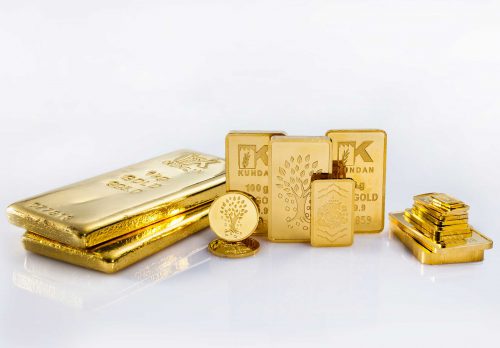Where does gold originate?
Gold’s natural journey began thousands of millions of years ago when hot gold-rich fluids rose from deep within the Earth, infiltrated and settled between the spaces of existing rocks. These hot gold-rich fluids then cooled, and the gold settled in cracks, fissures, and veins either in large nuggets or as finely disseminated gold dust. Over geological time these gold-bearing rocks weathered and released the gold through erosion. The released gold travelled in streams to a second home. Gold’s high density caused this free alluvial gold to concentrate in depressions or barriers. In the gold rush days, gold prospectors panned alluvial gold. It is hard to appreciate the geological time taken for gold to form. It is also hard to understand how sparsely distributed gold is in its host rock.
A gold grade of between 8–10 grams per tonne is considered a rich deposit. To visualise this, imagine trying to find 8 grains of pepper in a cubic metre of sand. Many operating mines only average 4–6 grams per tonne, and some opencast mines contain 1–4 grams per tonne. No wonder gold is valuable.
How is gold processed and refined?
The gold-bearing rocks still contain many unwanted minerals. A metallurgist crushes the ore to a fine size, and using several advanced methods, he or she establishes how to separate the gold-rich particles from the unwanted particles. Every gold deposit is unique, and the metallurgist does many tests before he or she obtains optimum results. The gold concentrate is then ready for refining. Gold’s impurities, such as silver, are then removed. Fire assay is the best method for determining gold’s purity. When the gold is pure, it is poured or pressed into a cast and cooled. The gold bar’s origin, purity, and weight are recorded and engraved on the bar. The gold bar must contain 99.99% gold.
Is gold bullion a good investment?
When you buy physical gold, you own that gold, as an asset. If you invest in gold exchange traded funds (ETFs) you don’t have a claim on the gold that is in that fund and you have to rely on a financial institution. Bullion is a dependable investment because, unlike cash, it does not decrease in value or quality. The value of gold bullion depends on its weight and fineness. Gold bullion moulds into various sized bars ranging from one troy ounce (31.1 grams) to 400 troy ounce bars. Gold’s fineness should be 99% pure gold or 999. Older gold bullion may be only 99.6% and is therefore worth slightly less. Government mints like the Royal Australian Mint and the South African Mint manufacture gold bars in different weights.
The value of bullion relates to the spot price of gold. The gold price is a live market price quoted in US dollars per ounce and converted to the local currency. If you want to buy or sell gold bullion, make sure you visit a reputable bullion dealer. A reputable gold bullion dealer should offer you the lowest premium to the international spot price.





